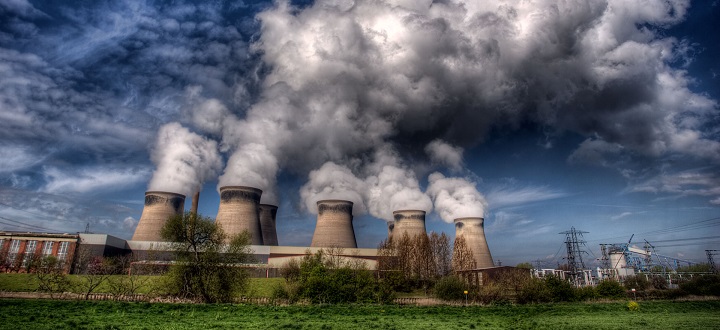Compounds made from waste such as vegetable peelings and seaweed could play a key role in capturing carbon dioxide (CO2) emissions from industry, according to research by our green chemists.
Renewable materials called Starbons were first discovered by scientists in the University’s Green Chemistry Centre of Excellence ten years ago.
Derived from waste biopolymers such as starch from potato peel or alginic acid from seaweed, Starbons are used in a range of industrial processes.
Breakthrough
Now, in a new research breakthrough, the team has discovered that the versatile compounds also absorb up to 65 per cent more CO2 than other industrial methods, opening up new opportunities for them to be used as a clean, efficient method of absorbing carbon emissions from power stations or chemical plants.
The secret lies in the synthetic structure of Starbons.
“Their structure is like a Swiss cheese,” explained Professor Michael North from our Green Chemistry Centre of Excellence. “Only a small number of holes are visible on the surface, but when you cut into the cheese, more holes become visible. In Starbons, it’s this network of different sized pores that enables the CO2 absorption.”
Water vapour
Starbons are also more selective in capturing CO2 when mixed with nitrogen. This could be important for capturing CO2 from power station flue gas which is 80 per cent nitrogen. They also retain the ability to absorb CO2 in water – another important trait because power station flue gas contains CO2 saturated with water vapour.
“This discovery has the potential to be of significant commercial and government value in helping the UK meet its CO2 emission reduction targets,” said Professor North.
Current methods of carbon capture include using chemicals known as amines in liquid solutions. But these processes are costly and require large amounts of energy.
University spin out
The new research is just the latest chapter in the University’s ongoing research into Starbons. A spin out company, Starbon Technologies, was set up in 2012 to explore commercial applications for the pioneering research work in the green chemistry laboratories.
Starbons are produced in powder, beads and other shapes. The compounds are used to separate complex mixtures of organic chemicals, to remove odours in household and medical applications and for the recovery of valuable metals from waste streams.
Professor James Clark, Head of the University’s Green Chemistry Centre of Excellence and Director of Starbons Technologies said: “The high CO2 adsorption, high selectivity, rapid kinetics and water tolerance, combined with the low cost and ease of large scale production from waste biomass, gives Starbons great potential. We hope to offer the product as a commercial capture agent for separating CO2 from chemical or power station waste streams.”
The text of this article is licensed under a Creative Commons Licence. You're free to republish it, as long as you link back to this page and credit us.






